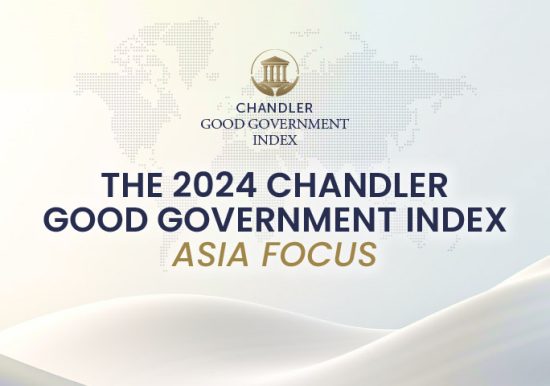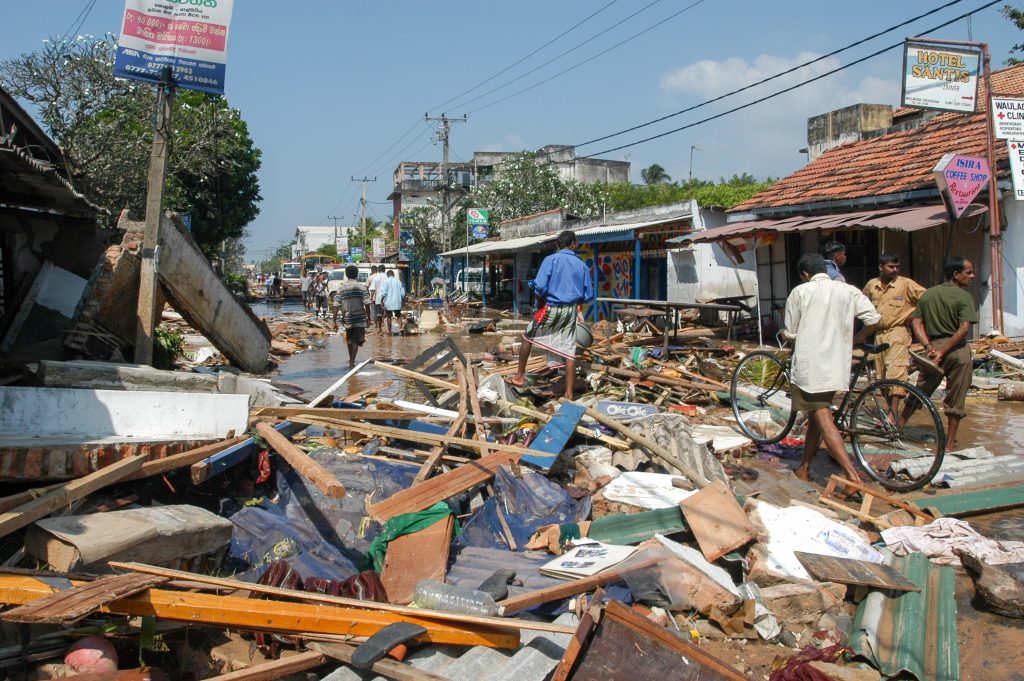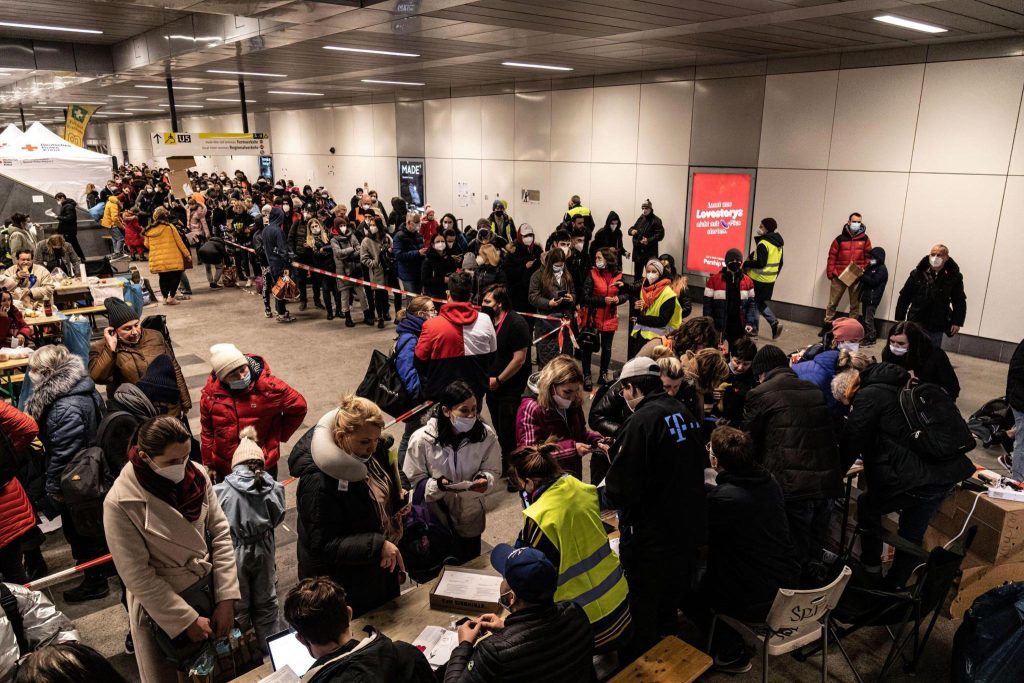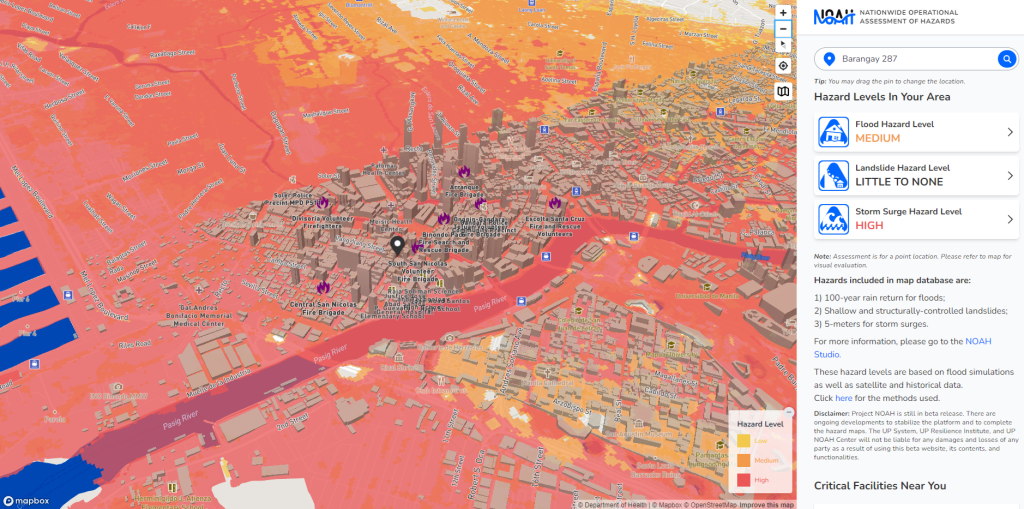
Citizens and businesses look to governments to act in a crisis. Within governments however, confidence in their own ability to lead their organisations through a crisis appears to be declining. A recent global survey revealed only 23% of government leaders completely agreed that their organisation could quickly pivot and adapt in response to disruptive events, a smaller proportion compared to leaders across all other sectors.1 Instead then of lurching from one crisis to the next, how can governments be better prepared and respond more effectively?
Some studies have identified certain governance “super-factors” that have a powerful positive impact on building government resilience. These include the control of corruption, societal trust, and high-quality political leadership.2 And indeed many of these super-factors fall within the capabilities ranked in the CGGI. But there are many more organisational and institutional factors that must be considered and applied for a coherent and effective crisis response.3 Many of these indicators can be found in the CGGI’s first three pillars of good government under Leadership and Foresight (Pillar 1), Robust Laws and Policies (Pillar 2), and Strong Institutions (Pillar 3).
Effective Leadership and Laws in a Crisis
Good leaders, it is often argued, are forged in crisis. But first, good leaders establish strong foundations by developing and sustaining cultures of integrity, sound values, and competence. Leadership and Foresight capabilities prime public institutions to anticipate, prepare for, and mitigate crises, even when faced with unpredictable shocks. This helps ease the transition to a “new normal”, or even towards a “better normal”. Developing these capabilities serves governments well both in “normal” times and in a crisis. Long-Term Vision and Adaptability can help make sense of new information and adapt plans and actions accordingly; Strategic Prioritisation helps weigh up difficult policy trade-offs that may be needed; and Innovation allows for creativity and experimentation to develop more potential responses.
Robust Laws and Policies are the supporting frameworks for governments’ management of crises. A justice system that is consistent, principled, accessible, and transparent, engenders public trust—vital during a crisis.4 Robust policymaking processes that are balanced, inclusive, and effective, enable public institutions to respond efficiently and equitably when crises strike.

Senegal’s experience in the COVID-19 pandemic shows that effective leadership and policies can overcome limited resources and scientific uncertainty to mitigate a crisis. Once the virus was detected in the country in early 2020, the government took swift action to close schools and air travel, impose a nationwide curfew, and stop large gatherings, including at mosques, while providing financial support to those whose livelihoods were affected. The government was able to adapt its existing disease management infrastructure and processes that had been developed for other infectious diseases such as Ebola.
Key Government Capabilities to Manage Crises
Any disruptions or delays to the smooth delivery of public services during a crisis has significant repercussions on citizens and businesses. In a polycrisis, public sector institutions need to rely on certain capabilities—Coordination, good Data Capability, Implementation, and a competent civil service—more than ever.
Governments that regularly implement their own policies effectively and meet their policy objectives are likely to be better prepared for a crisis. Countries that had already implemented key digital government strategies well were better prepared to pivot during the pandemic. Rwanda had rolled out Irembo, a national digital platform for public services, in 2014 as part of its government digitalisation plan, which allowed citizens to access cross-sectoral government services digitally. The government also made regulatory reforms investing in higher 4G network coverage and boosting the digital literacy of citizens.
Good government institutions have well-established processes in place to coordinate their crisis response effectively with other institutions, and not undermine one another. They also learn systematically from past failures and make improvements. South Korea’s experience of Middle East respiratory syndrome (MERS) in 2015 led the government to make 48 reforms to its public health emergency preparedness and response. This included an “implementation playbook”, which allowed government actions to be guided by science rather than politics.
Coordination across different parts of the public sector, as well as with private sector and civil society, reinforces positive impacts, and prevents unnecessary waste of resources when governments can least afford it. Months after the Indian Ocean tsunamis in December 2004 devastated the country, Sri Lanka moved from a system where disaster relief operations were handled on an ad hoc basis to establishing the country’s first National Disaster Management Council to lead and coordinate disaster-related work.
Effective stakeholder engagement and communication in a crisis is essential but it can be very complex. It means acknowledging, not dismissing, the severity of the situation, addressing people’s fears, and building the trust that helps people move on. Hours after the Christchurch mosque terror attack in 2019, the New Zealand government made it clear that although security measures were being taken, its priority was assisting the victims and the bereaved. New Zealand Police also tapped its established communication channels with local communities by convening Muslim community leaders a day after the attack to help manage community interactions, and ease tensions.

Guarding Against Corruption
Unfortunately governments need to guard against corruption more than ever during a crisis. Governments under pressure to act quickly during a crisis, can compromise on due diligence and transparency for expediency, allowing bribery and fraud to be masked. Increased aid flows in response to a crisis can create opportunities for graft and theft. Corruption in post-disaster recovery efforts can lead to poorer recovery outcomes and increased vulnerability to future disasters, for instance by supplying cheaper and poor-quality materials for post-disaster rebuilding. A study by the Government Accountability Office in the US estimated that corruption and fraud related to the Hurricanes Katrina and Rita relief efforts accounted for 10-22% of total payments, with losses of between USD 600 million and USD 1.4 billion.5 As noted corruption researcher, Prof Elizabeth David-Barrett says: “Cleaning up public procurement should be our global priority.”6 That priority is even greater during a crisis when larger-than-normal sums are channelled to public procurement. Public trust in governments eroded by corruption makes it harder to mount effective responses to future crises.
Corruption has already tainted the pandemic response in both developed and developing countries. For instance, protests erupted in Paraguay in 2021 due to rigged prices and a black market for vaccines, while corruption scandals linked to 2020 pandemic spending in South Africa sparked uproar. According to Transparency International, the pandemic worsened corruption in the healthcare sector across the EU.7

Public institutions from any country can manage crises better when they focus on core capabilities. How governments can mitigate, prepare for, respond, and recover from a polycrisis will determine which countries can weather this storm and the next.
Italy
Italy has been a standout 2023 performer across the first three pillars of the CGGI. There have been substantial improvements in Strategic Prioritisation (from 87th to 23rd) and Innovation (from 33rd to 20th) in the past year. Public sector institutions in Italy also improved significantly in Coordination and Implementation, jumping respectively from 67th to 22nd and 58th to 8th in the rankings.
Despite being hit early and hard by the COVID-19 pandemic, the crisis provided fresh impetus to the Italian government to seriously pursue reforms to improve government effectiveness and resilience. Despite reform efforts in the past, Italy continues to suffer from variable quality of public goods and services, and uneven public sector administrative capacity across regions. Public institutions and public service delivery in Italy have been some of the least trusted among OECD countries.8 This weakened Italy’s initial response to the pandemic.
In February 2021, the formation of a technocratic unity government, led by former European Central Bank President, Mario Draghi, was a stop-gap measure during an unprecedented crisis, but it injected a much-needed dose of political stability. The Draghi government put together a credible National Recovery and Resilience Plan (NRRP), which helped Italy secure the largest share—EUR 191.5 billion (USD 226.3 billion) in grants and loans–from the EU’s Recovery and Resilience Facility (RRF), a temporary financial facility to boost the EU’s post-pandemic recovery. The government also added another EUR 30.6 billion (USD 32.9 billion) financed through its national budget. Italy’s NRRP set out the structural reforms, all to be implemented by 2026, which are enabling Italy to emerge stronger from the pandemic, and be better prepared for future shocks and longer-term challenges such as climate change and digitalisation.

A key plank of the NRRP is modernising Italy’s public administration that draws on initiatives contained in the “Simplification Decree” introduced in July 2020 in response to the pandemic. The Simplification Decree simplified or relaxed some regulations and procedures related to the environment, renewable energy, infrastructure, procurement, and public administration, in order to accelerate the crisis response and recovery. For example, it temporarily accelerated approval requirements for health products. The Decree also took some steps towards addressing “defensive bureaucracy”—where the public sector is incentivised to take low-liability but ineffective choices—that can provide suboptimal outcomes during a crisis. It introduced temporary relaxations of public servants’ personal liability before the Court of Auditors. The Simplification Decree was converted into law in July 2021.
Another NRRP priority is strengthening the public sector’s human resources (HR) systems. The NRRP encourages renewal within Italy’s ageing public sector workforce by financing the hiring of new public officials to fill gaps. Other reforms include the development of HR competency frameworks to guide the public administration’s personnel movements and training priorities, and changes to public sector recruitment to attract more competent applicants.
Accelerating public sector digitalisation is a priority. The NRRP allocates EUR 6 billion (USD 6.5 billion) for digital infrastructure and digital governance, such as implementing a “once only” principle to boost interoperability of government systems and digital identities. The NRRP also focuses on building the competency of public servants in using digital technologies. To ensure that reforms stay on track, the Draghi government established a new office within the Ministry of Economy and Finance to centrally coordinate the implementation of the NRRP, and a steering committee within the Prime Minister’s Office to guide its implementation.
Germany
From the Ukraine refugee crisis to the gas crunch, Germany has had to respond decisively in the face of growing geopolitics headwinds in 2022. Germany has performed well in Innovation and Strategic Prioritisation, rising 36 places to 24th, and 16 places to 40th respectively.

The exodus from Ukraine following the start of the war in February 2022 set off Europe’s biggest refugee wave since World War II. In Germany alone, about 1.1 million refugees arrived from Ukraine, on top of 214,000 asylum-seekers from elsewhere.9 This surpassed numbers seen during Europe’s migrant crisis in 2015-2016 when huge numbers fled conflicts in Syria, Afghanistan, and Iraq. The strains of accommodating such a large influx—close to half a million applied for asylum in 2015, and another 750,000 in 201610—almost brought down the government, but Germany managed to pull through. Refugees were first housed in reception camps, before shifting into better or private accommodation. Refugee children were quickly put into schools, with the curriculum incorporating education on German cultural norms. Ground-up networks of schools, refugee homes, and lawyers shared good practices for working with refugees.
The German government learnt from the 2015 experience—a key trait of a resilient government—and made changes to its refugee policies and processes. Rather than being distributed randomly to municipalities throughout Germany like other refugees, Ukrainian refugees were placed under a new distribution system that considered family ties. Those able to secure their own accommodation could choose where to reside in Germany. Only those applying for social benefits or housing would be allocated throughout Germany. While some municipalities faced resource and space crunches, others that had retained the prior physical and policy infrastructure, are coping better. A cost-sharing mechanism with the federal government is helping to ease the financial burden on state and local authorities. The federal government has also proposed reforms to its migration policies, including lowering bureaucratic hurdles in the asylum system, and offering citizenship to those who have lived in Germany for some time.
The war in Ukraine also sparked an energy crisis in Germany, which had long been reliant on Russian natural gas. Natural gas, used for residential heating, as industrial feedstock, and for power generation, accounts for about a quarter of Germany’s primary energy mix. More than half of Germany’s gas supply came from Russia in 2021 via two pipelines. As tensions over Ukraine mounted, gas supplies from Russia to the EU were squeezed. In June 2022, Russia’s state-owned energy company, Gazprom, cut gas deliveries through the Nord Stream 1 pipeline by 75%. By late August, Nord Stream 1 was shut down entirely.
Germany’s Ministry for Economic Affairs and Energy had a three-stage emergency gas plan in place since 2012. Stage one (early warning stage) of the emergency plan, which was triggered in late March 2022, required gas transmission system operators (TSO) to update the Ministry on the supply situation. Coordination with electricity TSOs was also increased to keep power grids stable in the event of reduced gas supplies. When Nord Stream 1’s gas volumes fell, Germany moved to stage two (alert stage) on 23 June. While the government still relied on market-based measures, a law was passed in July that included the possibility of introducing a price-sharing mechanism to cover all gas consumers. In stage three (emergency stage), which has not yet been triggered, state intervention would take over and gas supplies would in effect be rationed.
So far, Germany has managed to avoid supply emergencies or rationing. The government is working to reduce its gas vulnerability by containing domestic demand and diversifying gas supplies. Citizens and companies have been asked to reduce gas consumption by at least 20%, while the government has limited the use of gas for lighting and heating in public buildings during winter. Germany has announced that it would replace all Russian energy imports as early as mid-2024. It is now buying more pipeline gas from other countries including Norway, as well as liquefied natural gas (LNG) via existing European terminals, leasing floating storage and regasification units, and building new LNG terminals in record time.11
Philippines
Within Southeast Asia, the Philippines faces one of the highest annual expected losses (as a proportion of GDP) from natural hazards such as typhoons, earthquakes, volcanic eruptions, and landslides. This has spurred the Philippine government to enhance its disaster risk management approach. The Philippines has seen an improvement in Coordination rising from 26th to 22nd place in 2023. The country also moved up six notches in governance outcomes under Helping People Rise (Pillar 7), buoyed by significant progress in Satisfaction with Public Services and Health.

In 2010, the government enacted the Philippine Disaster Risk Reduction and Management (DRRM) Act, which replaced the previous National Disaster Coordinating Council with the National Disaster Risk Reduction and Management (NDRRM) Council. This move was seen as a paradigm shift in the country’s approach to disaster management. The NDRRM Council had clearer and more comprehensive powers, an expanded mandate including disaster preparedness, and a broader stakeholder reach. Instead of only responding to disasters, the Philippines would shift towards more proactive disaster preparedness and mitigation, and a more holistic and comprehensive inter-agency and multi-sectoral approach.
The NDRRM counts over 40 government agencies as members, and includes representatives from civil society and private sector organisations. Overall responsibility for disaster preparedness lies with the Department of the Interior and Local Government, while the Department of Social Welfare and Development oversees disaster response, and the National Economic and Development Authority leads subsequent rehabilitation and recovery efforts. The new law also places greater emphasis on disaster management at the local levels, particularly in vulnerability assessment, disaster mitigation and preparedness.
Partnerships between the government and academia have helped to make better quality data available for decision making in integrated disaster prevention and mitigation. One example is the Nationwide Operational Assessment of Hazards (NOAH) project set up at the University of the Philippines in 2012. Initial funding for the project came from the Department of Science and Technology (DOST) as part of the national government’s disaster prevention and mitigation programme. Project NOAH provides open access to accurate, reliable, and timely hazard and risk data to allow national government agencies, private sector, academia partners, and the public to make informed decisions for disaster risk reduction activities. Project NOAH won an honourable mention in the Averted Disaster Award 2022, which aims to recognise successful disaster mitigation interventions around the world.
Project NOAH has implemented several data-driven features, such as mapping of the country’s flood, landslide and storm surge hazards. Through the deployment of more than 1,000 automated weather stations, rain gauges and flood sensors, the NOAH online portal offers near real-time data. It introduced the use of Web Geographic Information Systems in communicating hazards to the public in a user-friendly way and developed a People-Centred Early Warning System. For instance, the revamped NOAH website’s interactive hazard map was widely shared on social media when Typhoon Karding hit the Philippines in September 2022. The NOAH research centre also undertakes research projects to develop technologies and tools that further build the capacity of the government and the public in disaster preparedness and response.
Japan
Japan regularly ranks among the most resilient countries in the world with the capability to absorb shocks ranging from natural disasters to financial collapse.12 13 Ranked 13th overall in the CGGI, Japan has seen improvements in governance areas such as Transparency as well as Coordination and Data Capability.
Japan is known for its earthquake-resilient cities, and adaptable utility and transport infrastructure. The government has historically invested more than 5% of Japan’s fiscal resources in disaster risk reduction. At the national and subnational levels, the disaster risk reduction approach integrates both governance and technology. While the impacts of the Great East Japan Earthquake and tsunami that struck in 2011 were devastating, Japan’s history of disaster risk management and preparedness likely reduced losses.
The Resilient Tokyo Project launched by the Tokyo metropolitan government in December 2022 is one of the latest in a series of resilience-building efforts. The Resilient Tokyo Project sets out a comprehensive infrastructure plan to cope with five possible scenarios in the Tokyo metropolitan area—water-related disasters such as heavy rain, typhoons, and flooding; earthquakes and fires; volcanic eruptions; power outages and communications disruptions; and the outbreak of an infectious disease. This includes preparing for the possibility of multiple disasters happening at the same time. Some JPY 15 trillion (USD 114.3 billion) will be spent on the project up to 2049, including JPY 6 trillion (USD 45.7 billion) in the next 10 years, about 1.5 times more than in the past decade.
Building resilience to severe storms, typhoons, and flooding is one of the most critical areas for Japan. By some estimates, Tokyo would see 10% to 19% more rainfall and sea levels rising by about 0.6 metres in the 2040s. While the Metropolitan Area Outer Underground Discharge Channel, completed in 2006, has a 6.3 km system of tunnels and huge tanks to protect north Tokyo from flooding, changing rainfall patterns could pose new challenges. The metropolitan government is bringing forward plans to increase the capacity of reservoirs from 1.28 million to 1.5 million cubic metres, and building higher coastal levees and tidal walls. It is also using AI to better predict tsunamis and flooding. Tokyo, which still has about half of its power cables above-ground, is moving them underground to reduce the risk of power outages and road damage during typhoons.

Endnotes
- Black, G., Boyd, J., Hirji, Z., Greszta, R., & MacPherson, D.(2022, April 29). Reimagining Resilience for Government and The Public Sector | Deloitte | Blog. Deloitte. https://www.deloitte.com/global/en/services/risk-advisory/blogs/reimagining-resilience-for-government-and-the-public-sector.html
- Brown, F. Z. (2022, May 23). Governance for Resilience: How Can States Prepare for the Next Crisis? Carnegie Endowment for International Peace. https://carnegieendowment.
org/2022/05/23/governance-for-resilience-how-can-states-prepare-for-next-crisis-pub-87175 - Yen, W., Liu, L., Won, E., & Testriono. (2022). The imperative of state capacity in public health crisis: Asia’s early COVID‐19 policy responses. Governance, 35(3). https://doi.
org/10.1111/gove.12695 - Badman, R. P., Wang, A. X., Skrodzki, M., Cho, H.-C., Aguilar-Lleyda, D., Shiono, N., Yoo, S. B. M., Chiang, Y.-S., & Akaishi, R. (2022). Trust in Institutions, Not in Political Leaders, Determines Compliance in COVID-19 Prevention Measures within Societies across the Globe. Behavioral Sciences, 12(6), 170. https://doi.org/10.3390/bs12060170
- United States Government Accountability Office,. (2014). Hurricane Sandy: FEMA Has Improved Disaster Aid Verification but Could Act to Further Limit Improper Assistance. In Government Accountability Office. https://www.gao.gov/assets/gao-15-15.pdf
- David-Barrett, L. (n.d.). Opinion: The fight against cronyism. University of Sussex. Retrieved April 12, 2023, from https://www.sussex.ac.uk/alumni/falmer-magazine/features/the-fight-against-cronyism
- Business Times. (2021, June 15). Covid crisis worsened corruption in EU: watchdog. Business Times. https://www. businesstimes.com.sg/international/covid-crisis-worsened-corruption-eu-watchdog
- Bulman, T. (2021). Strengthening Italy’s Public Sector Effectiveness. Organisation for Economic Co-operation and Development. https://one.oecd.org/document/ECO/WKP(2021)41/en/pdf
- Chazan, G. (2023, February 17). Germany faces repeat of 2015 refugee crisis as 1mn Ukrainians seek safety. Financial Times. https://www.ft.com/content/c097f57b-99d9-4046-9db1-b8ee8b4f5a1b
- Hasselbach, C. (2020, August 25). Five years on: How Germany’s refugee policy has fared. DW News. https://www.dw.com/en/five-years-on-how-germanys-refugee-policy-has-fared/a-54660166
- Kurmayer, N. J. (2022, December 17). Germany’s first LNG terminal is open for business. EuraActiv. https://www.euractiv. com/section/energy/news/germanys-first-lng-terminal-is-open-for-business/
- Swiss Re. (2019, September 7). These are the world’s 10 most resilient countries. Swiss Re. https://www.swissre.com/risk-knowledge/building-societal-resilience/the-worlds-10-most-resilient-countries.html
- Lloyd’s Register Foundation. (2022, October 3). Japan among the most resilient countries in the world. Lloyd’s Register Foundation. https://www.lrfoundation.org.uk/en/news/resilience-japan-community-support/
More Stories


Watch the 2024 Chandler Good Government Index Global Launch Event

